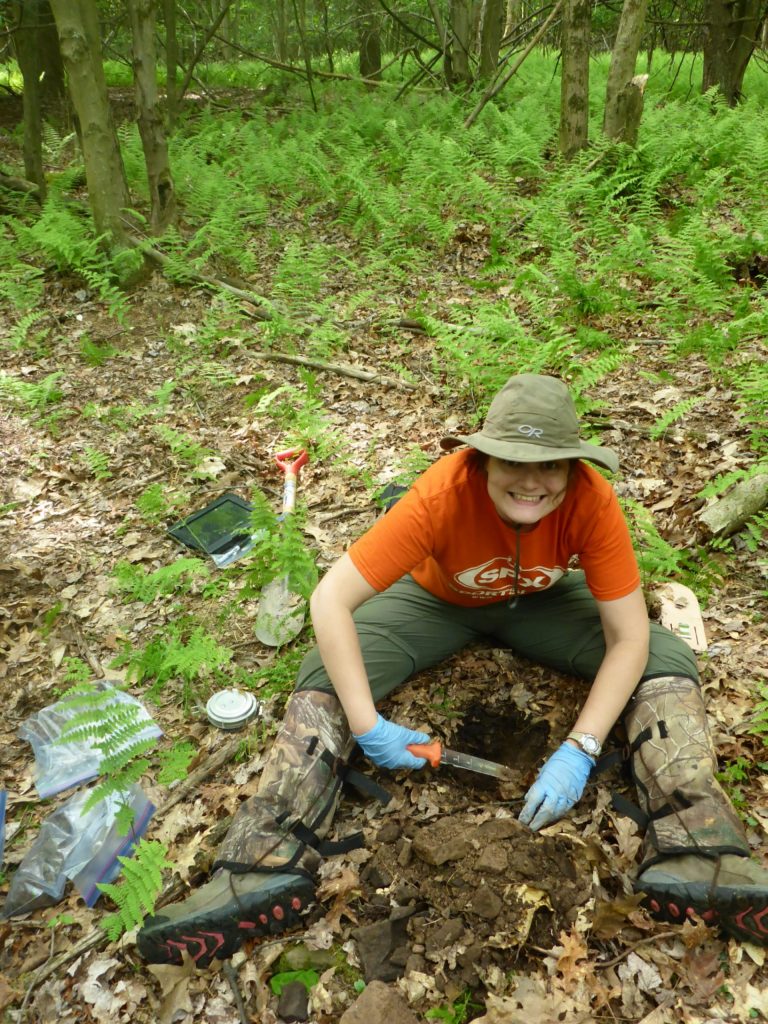Over the last 3 years I’ve spent countless hours in the woods hauling fence, lime, and herbicide around Rothrock and Bald Eagle State Forests. Then there were the 24 vegetation plots I monitored. I knew these plots on a first name basis – the best (and worst!) routes to get to them and everything that grew in them. My attachment is strong to my study area, despite the beating I took from mountain laurel on a daily basis.
The most important work at these sites is going to occur well after I’m gone. Vegetation is the tortoise in Aesop’s famous “The Tortoise and the Hare”. Barring a catastrophic event (like fire), plant communities take their time in responding to changes in environmental conditions.
I don’t have 15 years to complete a PhD! But there will be other PhDs who follow. Let’s take a look at what legacy I’ve left for the students who work for the Deer-Forest Study in the future.
With significant help, I:
- expanded the plot layout at 24 locations to include 6 additional subplots to implement liming, fencing, and herbicide treatments
- constructed 72 10’x10′ deer exclosures which will provide a valuable baseline to evaluate deer impact on state forest lands over the next decade
- carried more than 60 gallons of herbicide via backpack sprayer to treat competing vegetation
- carried 1,200 lbs of lime to field sites to change soil chemistry
- collected more than 1,400 soil samples to track baseline soil conditions and soil responses to liming
- conducted more than 750 vegetation surveys to catalog baseline forest conditions and immediate responses to liming, herbicide treatment, and fencing
All this work has produced a lot of data. Sorting through it takes time, but I’m starting to get some results. The most encouraging result I’ve seen to date, however, will not be included in my dissertation.
The herbicide and liming treatments I implemented were successful. After pairing 2014 and 2016 soil samples and comparing the pH values in the uppermost organic soil horizons, we saw a significant increase of about 1 pH unit at limed sites (the L’s on the graph). The error bars represent 95% confidence intervals and the letters represent significant differences between years (same letter = not significant). Not surprisingly, herbiciding (H) and fencing (F) had no effect on pH – values remained relatively consistent between years when we didn’t lime.

It’ll take a few more years before the mineral soil sees these same benefits, and possibly even longer before the vegetation starts to show a response.
One of the most detailed studies we have on the effectiveness of liming comes out of the US Forest Service’s Northern Research Station and began in 1985. The study looks at how trees (primarily black cherry and sugar maple) respond long-term to liming on the Allegheny plateau. It took about 5 years before the mineral soil showed a positive response to liming, and 10 years before there was a significant effect on tree growth. The study is still collecting data and reporting results 30 years later!
Since our study is focusing on understory plants that grow a little faster than overstory trees, we anticipate we should see results within 5 years.
5 years—just in time for the next student to start leaving their own legacy behind.
Department of Ecosystem Science and Management
If you would like to receive email alerts of new blog posts, subscribe here.
And Follow us on Twitter @WTDresearch
